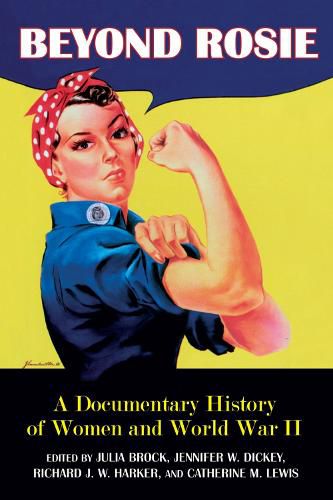Readings Newsletter
Become a Readings Member to make your shopping experience even easier.
Sign in or sign up for free!
You’re not far away from qualifying for FREE standard shipping within Australia
You’ve qualified for FREE standard shipping within Australia
The cart is loading…






More so than any war in history, World War II was a woman’s war. Women, motivated by patriotism, the opportunity for new experiences, and the desire to serve, participated widely in the global conflict. Within the Allied countries, women of all ages proved to be invaluable in the fight for victory. Rosie the Riveter became the most enduring image of women’s involvement in World War II. What Rosie represented, however, is only a small portion of a complex story. As wartime production workers, enlistees in auxiliary military units, members of voluntary organizations or resistance groups, wives and mothers on the home front, journalists, and USO performers, American women found ways to challenge traditional gender roles and stereotypes.
Beyond Rosie offers readers an opportunity to see the numerous contributions they made to the fight against the Axis powers and how American women’s roles changed during the war. The primary documents (newspapers, propaganda posters, cartoons, excerpts from oral histories and memoirs, speeches, photographs, and editorials) collected here represent cultural, political, economic, and social perspectives on the diverse roles women played during World War II.
$9.00 standard shipping within Australia
FREE standard shipping within Australia for orders over $100.00
Express & International shipping calculated at checkout
More so than any war in history, World War II was a woman’s war. Women, motivated by patriotism, the opportunity for new experiences, and the desire to serve, participated widely in the global conflict. Within the Allied countries, women of all ages proved to be invaluable in the fight for victory. Rosie the Riveter became the most enduring image of women’s involvement in World War II. What Rosie represented, however, is only a small portion of a complex story. As wartime production workers, enlistees in auxiliary military units, members of voluntary organizations or resistance groups, wives and mothers on the home front, journalists, and USO performers, American women found ways to challenge traditional gender roles and stereotypes.
Beyond Rosie offers readers an opportunity to see the numerous contributions they made to the fight against the Axis powers and how American women’s roles changed during the war. The primary documents (newspapers, propaganda posters, cartoons, excerpts from oral histories and memoirs, speeches, photographs, and editorials) collected here represent cultural, political, economic, and social perspectives on the diverse roles women played during World War II.